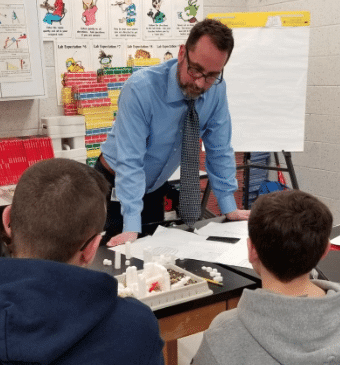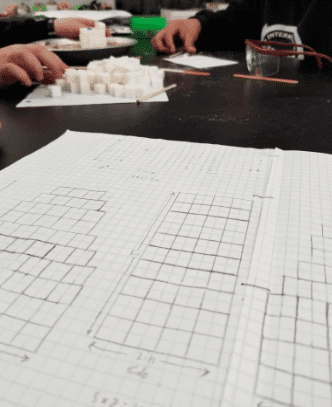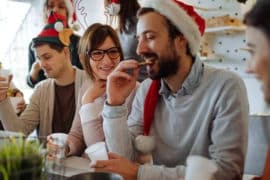A while back, I got that dreaded email from my supervisor.
You know, the one that says, “We love what you’re doing in the classroom. Would you be willing to share it with the WHOLE department at our next meeting?”
Everything in me screams NOOOOOOOOO (I hate public speaking,) even as the word “yes” comes out of my mouth!
How had I managed to draw this kind of attention to myself? How did I end up with a steady stream of observers — from the principal to the district curriculum director, to the assistant superintendent — in my classroom?
Blame it on the allure of the cross-curricular lesson.
Cross-curricular lessons are one of those hot topics in education today, and for very good reason. These lessons involves teachers making conscious effort to use a central issue, topic or theme to bring together various subjects/disciplines that may not traditionally come together in the typical classroom.
The real world does not exist in compartmentalized subjects. So, it makes sense to journey outside of our designated subjects to mirror the real intersections that our students will experience in life. The goal is to develop students into people who will be readily able to access all of their skills simultaneously to problem solve and navigate in any situation.
So why is it so hard to accomplish this in the classroom?
The central challenges are time constraints and support. We already have so much to cover in our own disciplines; that branching over into other subjects seems impossible. Support for cross-curricular learning can also be hard to get from parents, administrators and fellow educators.
However, there are also some very compelling reasons why districts are pushing for interdisciplinary approaches in our classrooms.
Cross-curricular lessons motivate and challenge students. Learners are captivated, and attention is maintained because a central theme is viewed through the lenses of each academic subject. Students are exposed to varied teaching styles and approaches, adding multifaceted, deeper levels of comprehension.
We just mentioned time constraints was a hindrance for cross-curricular lessons. However, overlapping goals, content, and curricular lessons with other teachers can actually save us time and effort.
I think as educators, it’s time to start utilizing cross-curricular lessons. Let’s roll up our sleeves and get out of our comfort zones. Listen, I’m not recommending something that I am not willing to do myself. I’ve taken this challenge to heart and acted on it. My team conquered the beast of a four subject, four-teacher, four classroom lesson.
So how did it go? It was challenging, but inspiring. We were crossing the lines of our academic backgrounds to plan what and when our students were learning in all four classrooms. Our doors remained opened as we ventured into actively teaching this four classroom lesson. This made it easier to communicate as needed during class, or even switch rooms and jump into the other lessons. We were having fun!
On the other side of the educational equation, our students were having fun! The lesson was an engineering challenge that required student classes to design an Inca City, and, as individual groups, to design and create an Inca style structure that could survive an earthquake within that city. This cross-curricular goal required each subject to prepare their students within their own academic background. The skills they acquired in each class were taken from room to room with them. They added to them, and refined them, until they had a final product that reflected an understanding of the running theme across all four disciplines.
Really, I don’t think that our lesson of choice mattered. What matters is this: what is YOUR lesson of choice? This doesn’t happen by chance. We compared notes on our curriculum until it aligned just the right way. We carefully discussed what we were doing within our classrooms to work up to our shared lessons. We checked on what was happening before, during, and after the lessons. As my fellow teachers noted, communication and sequence is the key to success here. We had to listen to one another’s ideas, and give up on some of our own. We had to consider the importance of all four subjects, and work with each of our curriculums, scope of sequence, and class needs. We had to recognize when we had shortcomings or weaknesses, and allow our fellow teachers strengths to lead at those times. And WOW! What follows that level of co-teaching is AMAZING results for the students and the teachers.
I know this might not sound possible for teachers everywhere, but someone has to initiate these types of projects before they ever begin. I have to give a HUGE shout out to my team for getting behind this with me, as well as my Toms River Schools Administration who noticed, observed, showcased, and appreciated our efforts, along with the students’ results. So why not give it a try and see what kind of spectacular teaching and learning might result from YOU taking your curriculum across the hall.
-Jessica Cicalese-Kurtz








